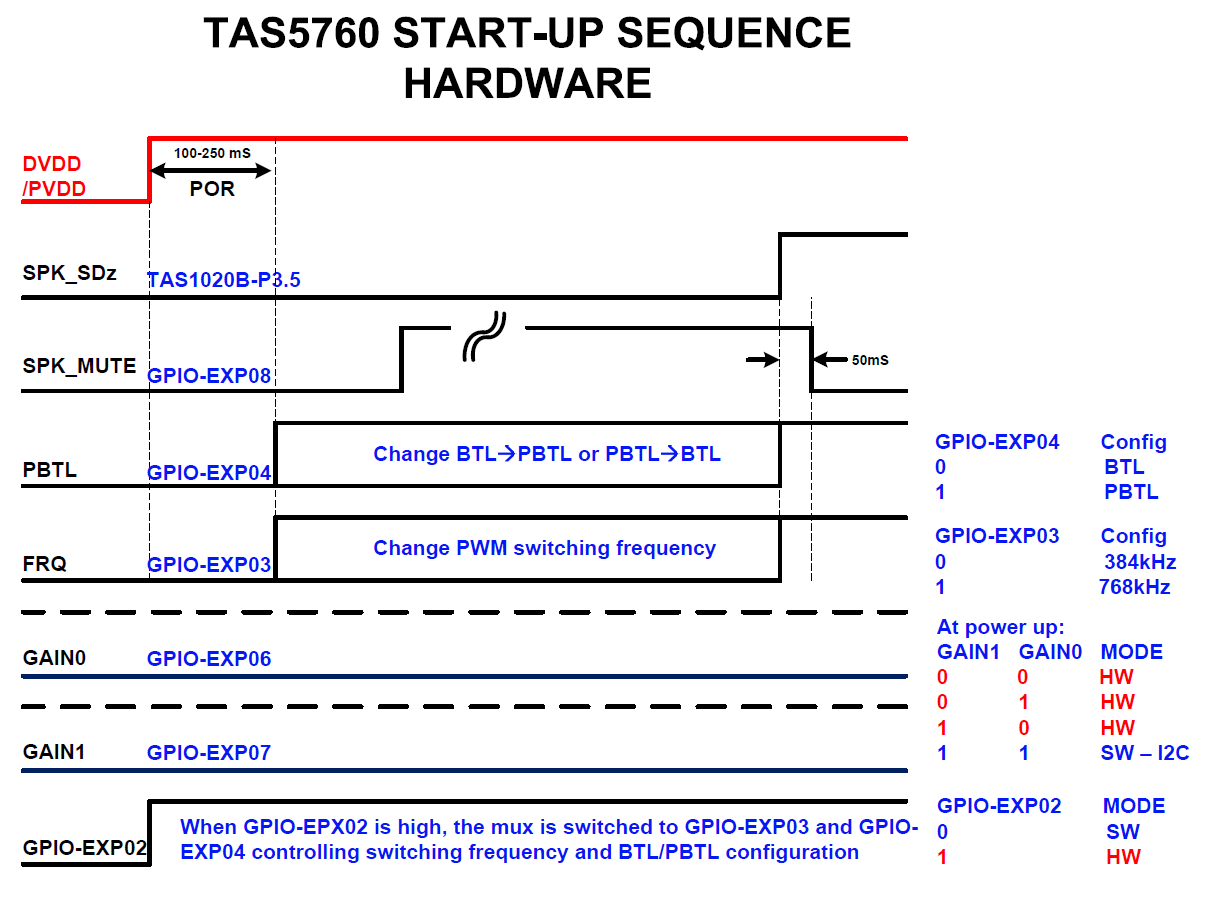Dear Sirs,
My customer asked us about Power on/off Sequence of TAS5760M for hardware control.
There is a phenomenon which is not output at power on of his board.
At that time, ANA_REG is 10 V and it is abnormal voltage. (Normal is 3.3V)
Therefore, I think that there is a factor in the power ON / OFF sequence.
Do you have what can be thought of as a cause in such a case?
His power on sequence is as follows.
1.After turning on the power supply, set SPK_SD to Low and SPK_SLEEP / ADR to High.
2.After the power supply is stabilized and the hard control pin is set, set SPK_SD to High.
3.After releasing shutdown, set SPK_SLEEP / ADR to Low and about 3 seconds after SPK_SD becomes High SPK_SLEEP / ADR is released.
Is this correct?
The power off sequence is
SPK_SD is LOW after SPK_SLEEP / ADR is HIGH and output OFF after the power is turned OFF.
Is this correct?
Best Regards,
Y.Hasebe


